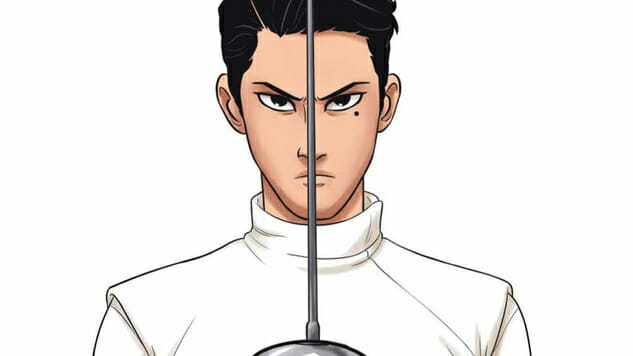Sports Romance Fence Leans into Tropes Both Enjoyable and Regrettable
C.S. Pacat & Johanna the Mad Pierce into BOOM's Latest Series
Art by Johanna the Mad
Fence #1
Writer: C.S. Pacat
Artist: Johanna the Mad
Publisher: BOOM! Studios
 C.S. Pacat is the latest in a gaggle of novel writers turning their attention to comic books. Fans of Pacat’s prose work won’t be surprised to learn that Fence is a gay romance story: the writer is best known for her Captive Prince Trilogy, a romance fantasy series that some people affectionately dubbed “Gay of Thrones.” Fence falls in the center of a Venn diagram made up of sports manga, romantic fan fiction and ‘80s nostalgia magnets like The Karate Kid and The Cutting Edge. There’s a genuine and unapologetic enthusiasm in it, a sense of conviction that might look overwrought or contrived in other hands.
C.S. Pacat is the latest in a gaggle of novel writers turning their attention to comic books. Fans of Pacat’s prose work won’t be surprised to learn that Fence is a gay romance story: the writer is best known for her Captive Prince Trilogy, a romance fantasy series that some people affectionately dubbed “Gay of Thrones.” Fence falls in the center of a Venn diagram made up of sports manga, romantic fan fiction and ‘80s nostalgia magnets like The Karate Kid and The Cutting Edge. There’s a genuine and unapologetic enthusiasm in it, a sense of conviction that might look overwrought or contrived in other hands.
The story stars two young men, Nicholas Cox and Seiji Katayama, who have seemingly little in common beyond competitive fencing. Nicholas is poorly trained, but possesses natural skill and a drive that pushes him to succeed, while Seiji is a seasoned competitor with an unbeatable record. It’s a familiar trope, but that’s because it works. The contrast provides immediate tension and lays out a compelling plot with specific parameters.

Fence #1 Interior Art by Johanna the Mad & Joana LaFuente
BOOM! Studios’ BOOM!Box imprint is an ideal home for Fence, and Johanna the Mad a great artist for it. The publisher has steadily built a roster of all-ages and young adult books that are filled with diverse characters, especially LGBTQIA+ romances. Johanna is a fan artist with a large following of her own, and her crisp, clean style keeps Fence feeling fun and joyous. This is one of her first large sequential projects, though, and there are a few panels where the perspective feels off. With a sport as specific and complex as fencing, it can be easy to get lost in the details, and difficult to visually convey what’s happening to an audience that likely has little experience with it at all, but Johanna and colorist Joana Lafuente avoid that ably.

Fence #1 Interior Art by Johanna the Mad & Joana LaFuente
-

-

-

-

-

-

-

-

-

-

-

-

-

-

-

-

-

-

-

-

-

-

-

-

-

-

-

-

-

-

-

-

-

-

-

-

-

-

-

-













































